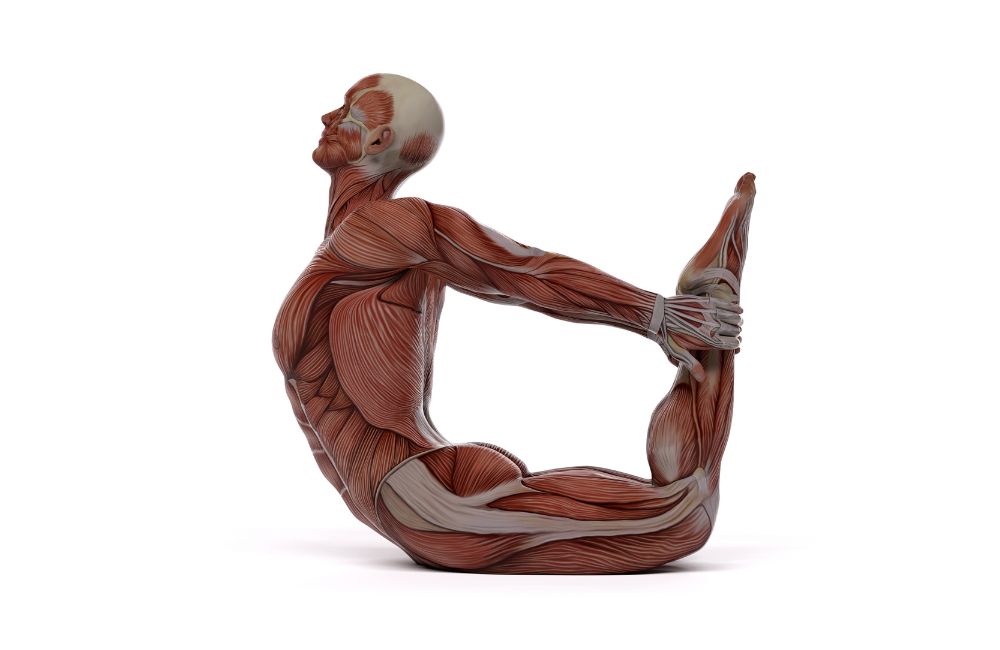
Suffering from lower back pain? Add these amazing stretches to your daily routine to get rid of lower back pain and restore your back health for good.
Lower back pain is one of the most common reasons for a person to visit his or her doctor.
This condition is so debilitating, that it can be hard for people with low back pain to stand, move, or even sit without excruciating pain.
Because of the nature of this ailment, tons of research has been devoted to finding a cure and an infallible preventable strategy for low back pain (1).
One thing has become clear through research in this space: exercise can help to both prevent and fix low back pain.
To be clear, there are different types of exercise, each of which is critical for our health (2). There is cardiovascular exercise, such as running, walking, and swimming.
Also, there is a resistance training exercise, which uses weights and other tools to increase muscle strength. Lastly, we have a flexibility exercise, which will be the focus of this article.
Below, I’ll outline 13 top stretches designed to keep the low back flexible and pain-free. As always, talk with your doctor before starting any new exercise program!
Also, check out:
Want to Age Well? Bulletproof Hips and Shoulders With These Mobility Exercises
24 Must-Know Yoga Poses That’ll Make Your Body Feel a 100 X Better
13 Best Stretches for Lower Back Pain
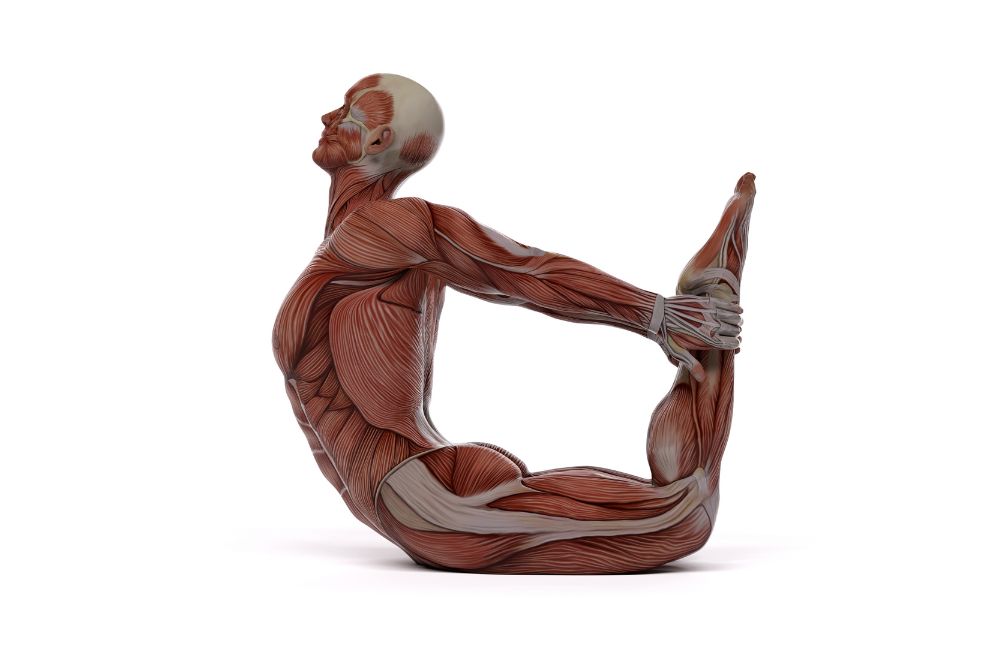
The lower back is involved with every movement we perform. Reaching, standing, sitting, lying down, rolling over, and nearly every other move you can think of involves the low back in some way.
For this reason, these exercises are focused on many different movements using the whole body.
1. Child’s Pose
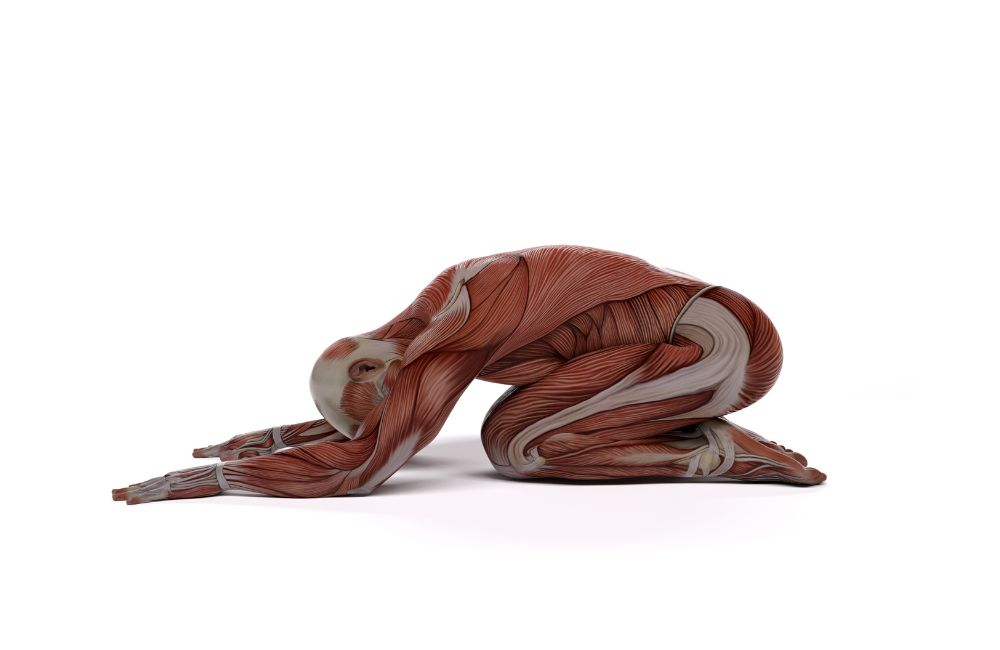
Child’s pose is one of the most popular yoga exercises there is. This movement is used in almost every yoga practice, as it is easy for most people to perform and it enables practitioners to achieve a deep, meditative stretch.
How to Perform
- Start on your hands and knees.
- Next, crawl your hands forward as far as you can as you simultaneously sit your buttocks back on your heels.
- Hold this pose for 30 seconds and repeat it 4 times per session.
- Complete this movement 3 or more times per week.
2. Wig Wags
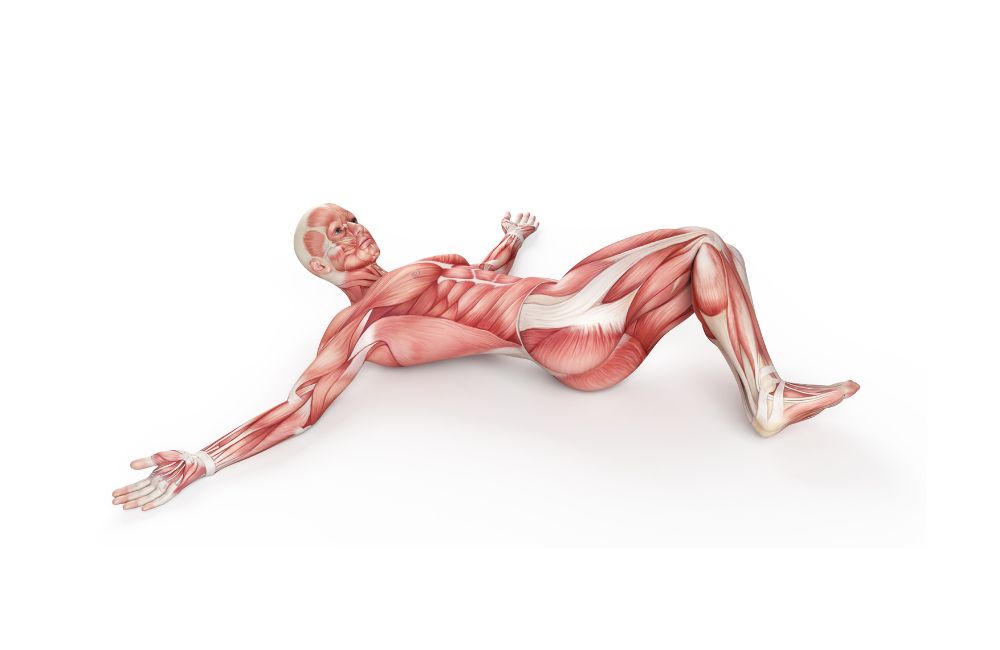
Wig wags are an easy exercise that can be performed almost anywhere. All you need is enough space to lie down on your back in order to complete this movement.
How to Perform
- Lie on your back, with your feet flat on the floor and your knees bent.
- Bring your feet and knees as close together as you can.
- Allow your knees to fall slowly down to the right side, keeping your shoulder blades flat on the floor.
- Hold this stretch for 10 seconds, then switch to the other side. Perform 10 reps per side, per session.
- Complete this movement 3 or more times per week.
3. Cat-Camel
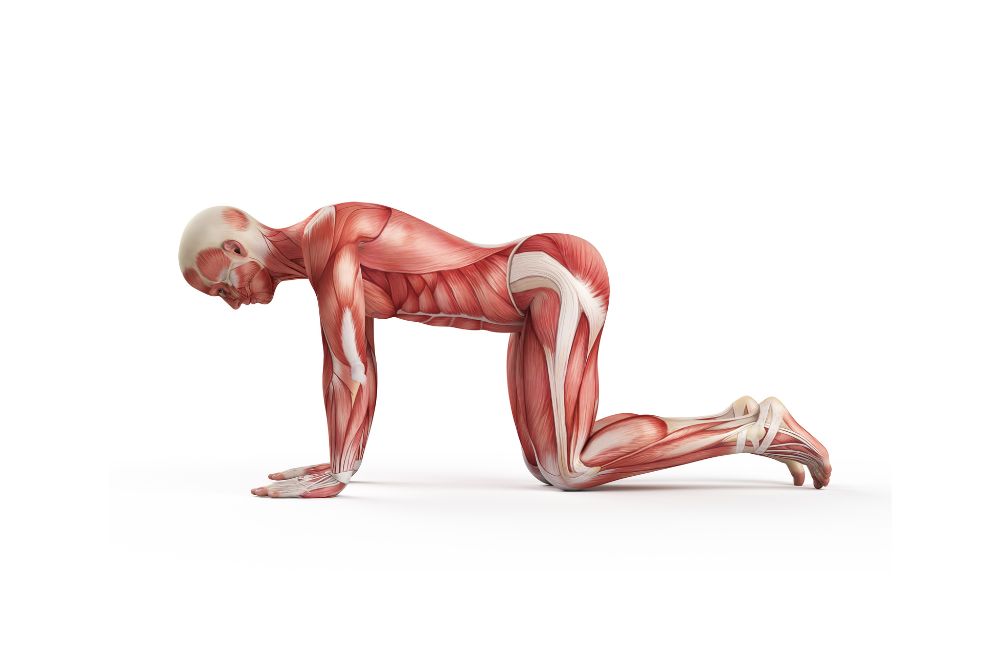
Many of the poses commonly used during yoga classes are named after animals. This is because animals tend to be naturally flexible and strong; we should emulate them!
How to Perform
- Start on your hands and knees, with your hands directly under your shoulders and your knees directly under your hips.
- On an in breath, allow your stomach to sink toward the ground as you bring your head up, looking forward.
- After holding this position for the entirety of your breath in, switch to a position of a rounded back, with your chin tucked into your chest as you breathe out.
- Complete 15 reps in each direction per session.
- Perform this movement 3 or more times per week.
4. Double Knee to Chest
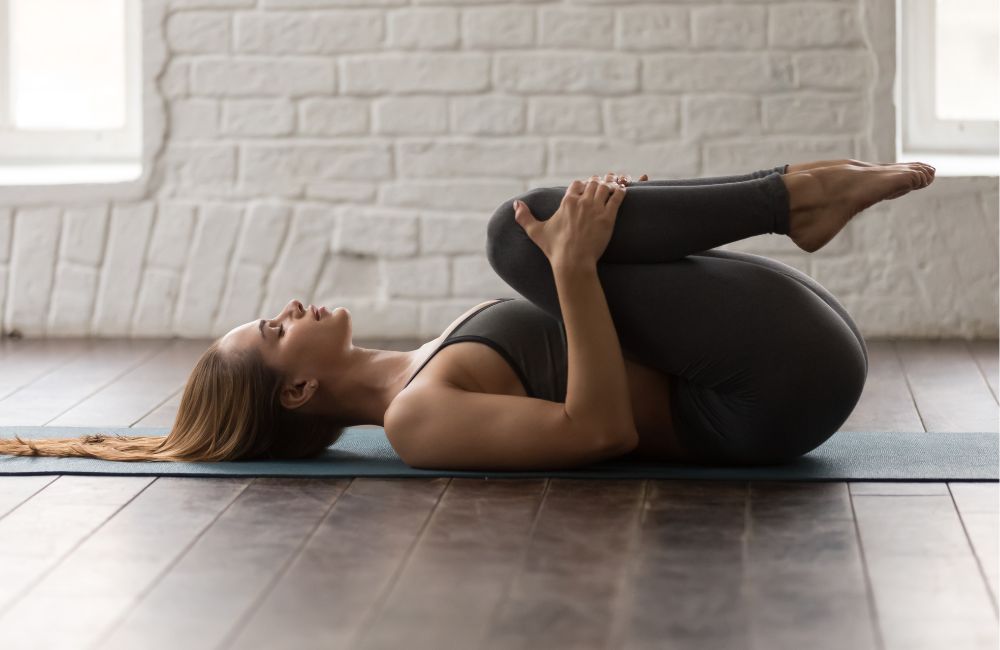
The hips are intimately involved with the low back. Therefore, it’s crucial that we work on hip flexibility in order to address low back pain.
How to Perform
- Lie on your back with your knees bent and your feet flat on the floor.
- Keeping your knees bent, tuck both of your thighs toward your chest, pulling them inward with your hands.
- Hold this position for 30 seconds and repeat it 4 times per session.
- Complete this movement 3 or more times per week.
5. Posterior Pelvic Tilt
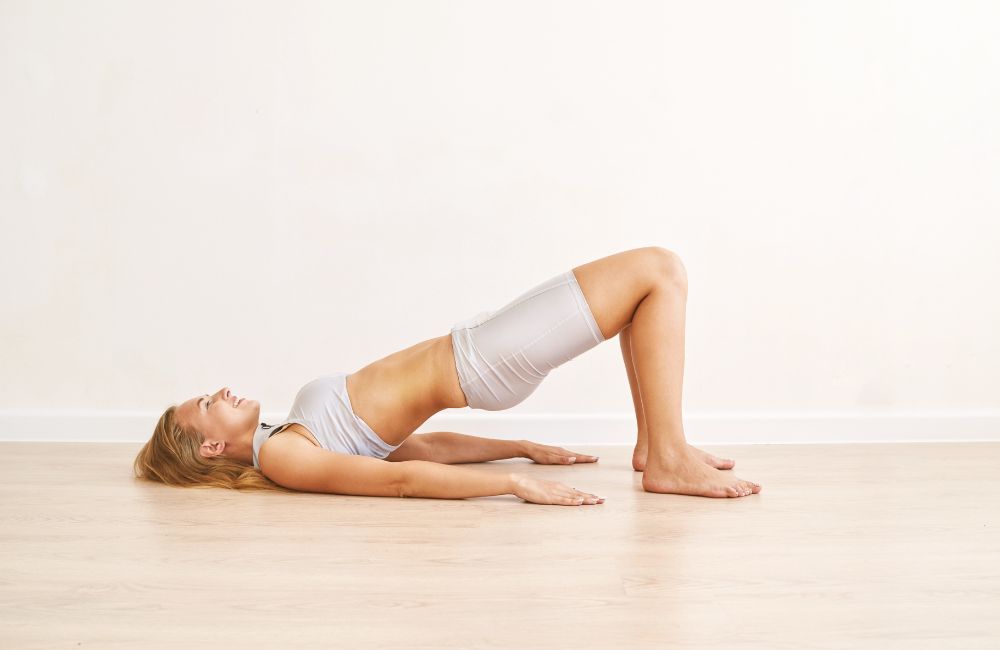
Many of us default to a position of anterior pelvic tilt for a variety of reasons. This posture is often due to weakness in our glutes and abs as well as tightness in our hip flexors.
How to Perform
- Lie on your back with your knees bent and your feet flat on the floor.
- Tighten your ab and glute muscles at the same time.
- This will cause your back to flatten out on the floor.
- Hold this position for 10 seconds and repeat it 10 times per session.
- Complete this movement 3 or more times per week.
6. Figure 4 Piriformis Stretch
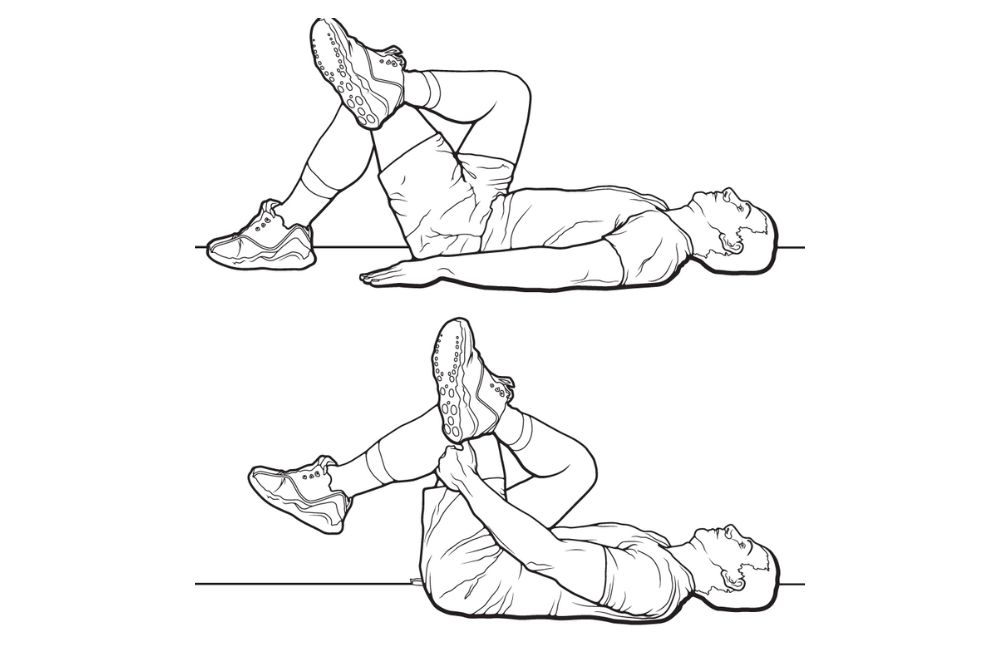
The piriformis is an important muscle for hip mobility and stability. Because it is so close to the low back area, tightness in this muscle can often cause lower back pain.
How to Perform
- Lie on your back, with your knees bent and your feet flat on the floor.
- Cross your right leg over your left, placing the outside of your right ankle on top of your left thigh, just above your left knee.
- Next, weave your hands through the opening in your thighs and interlace your fingers behind your left thigh.
- Pull your left thigh to your chest, bringing the right leg along with you.
- You should feel a deep stretch in your right buttocks.
- Hold this position for 30 seconds. Repeat 4 times per session on each leg.
- Complete this movement 3 or more times per week.
7. Supine Unilateral Posterior Chain Stretch
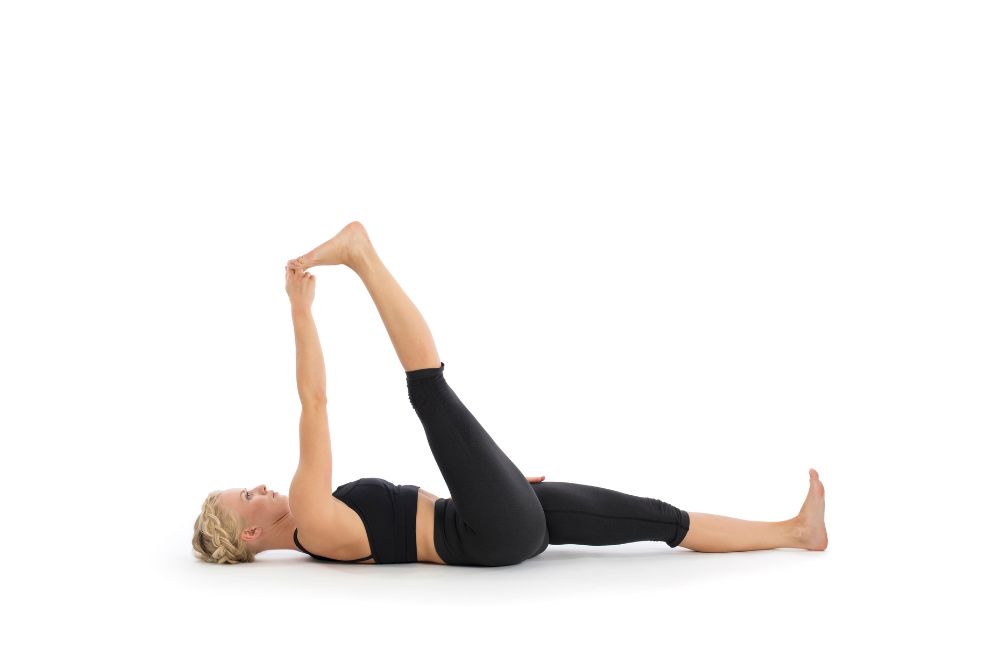
Your posterior chain is a grouping of muscles that runs from the bottom of your feet all the way up to the back of your head. Keeping this area loose helps to reduce many painful conditions throughout the body. Plus, flexibility in the posterior chain can improve athletic performance.
How to Perform
- Lie on your back with both of your legs out straight.
- Keeping your right knee straight, lift your leg up as high as you can.
- Next, grab your right foot with your right hand and pull your leg even further.
- Hold this stretch for 30 seconds and repeat 4 times per side, per session.
- Complete this movement 3 or more times per week.
8. Pretzel Stretch
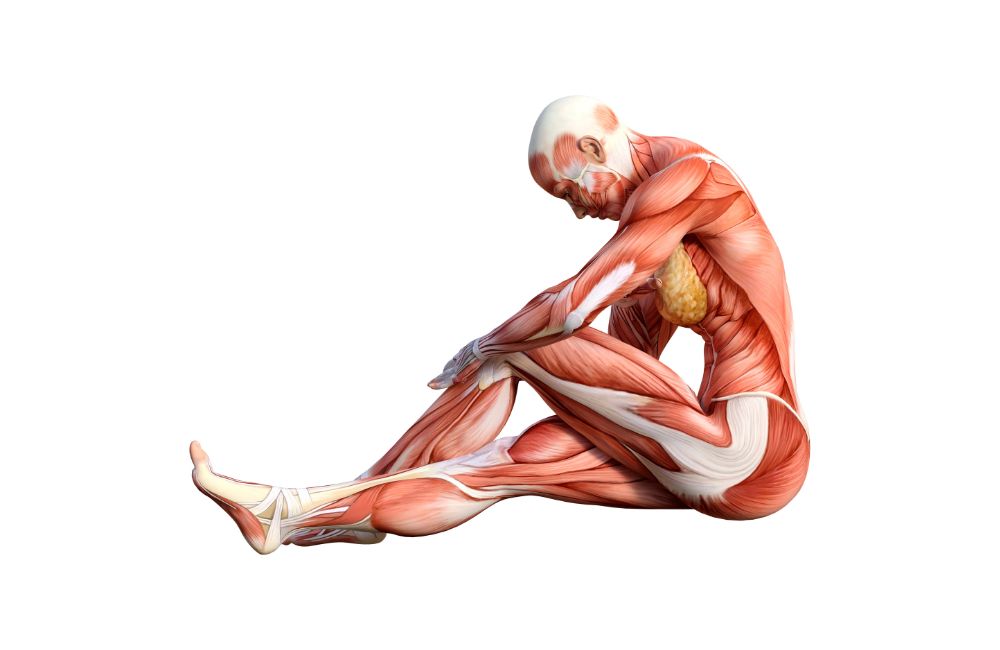
If you picture a yogi, this is likely one of the top stretches that come to mind. This move stretches the upper body, lower body, and spine all at the same time.
How to Perform
- Sit up tall on the floor.
- Cross your right leg over the top of your left, bending both knees.
- Next, reach both arms out in front of you, crossing your right arm over your left.
- Bend your elbows and attempt to place the back of both hands against one another.
- Hold this position for 2 minutes, then repeat on the other side.
- Complete this movement 3 or more times per week.
9. Glute Bridges
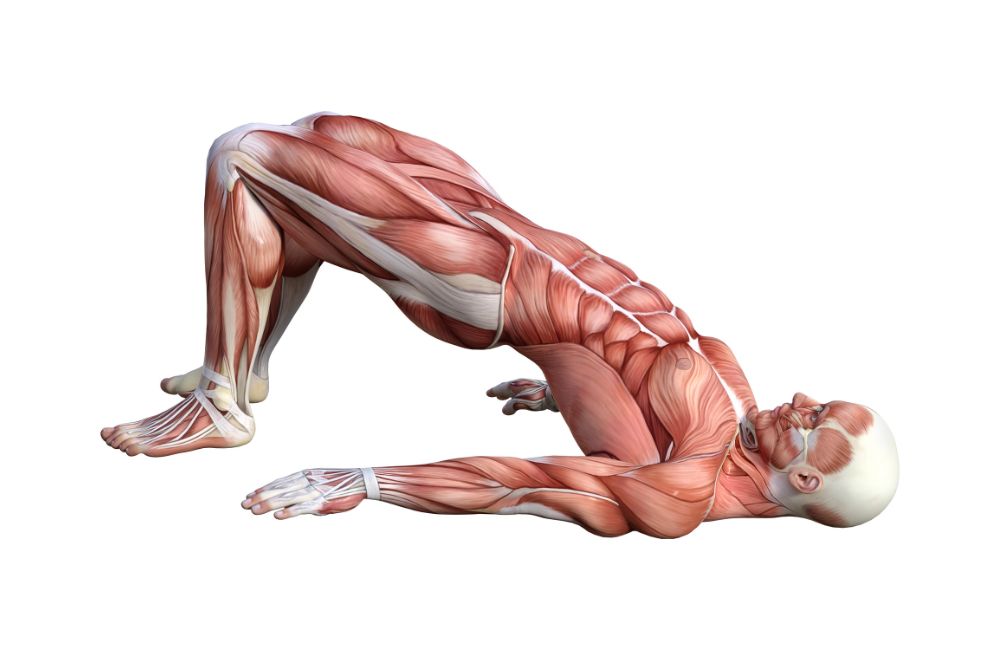
Bridges are effective for both lower body/back strengthening and flexibility. This two-in-one exercise needs to be part of your routine!
How to Perform
- Lie on your back with your knees bent and your feet flat on the floor.
- Next, press your heels into the ground in order to lift your hips off of the ground.
- Hold this position for 30 seconds and repeat it 4 times per session.
- Complete this movement 3 or more times per week.
10. Elbow Plank
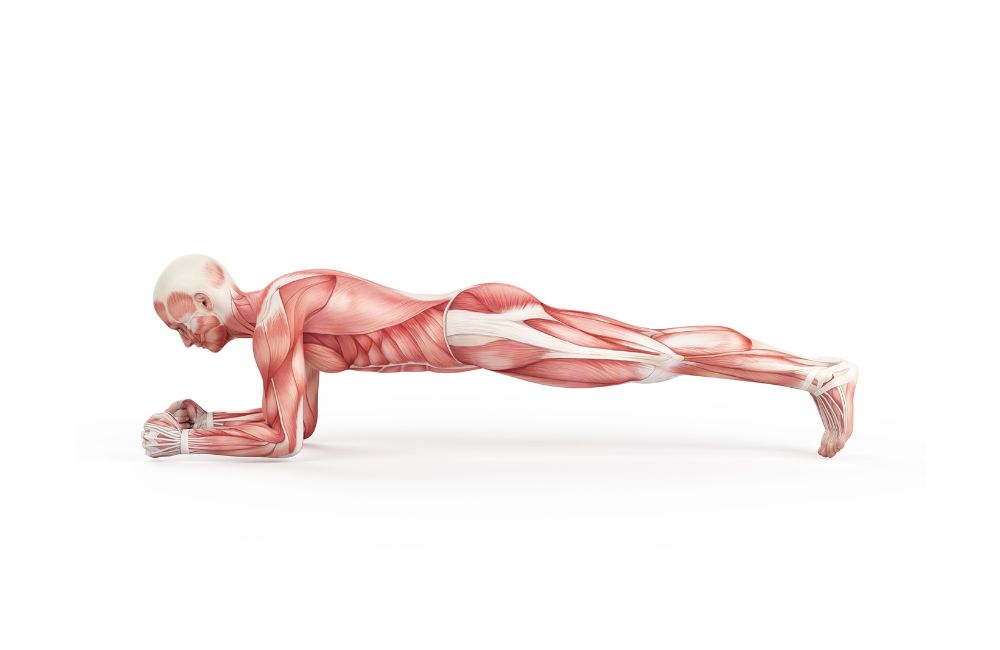
You’ve no doubt heard of planks before. This exercise makes it onto the list of every article about low back pain, and for good reason. Planks are excellent for increasing strength, stability, and even mobility in the low back.
How to Perform
- Start on your forearms and knees.
- Next, extend your legs behind you, placing your toes on the ground.
- Keep your back as flat as you can, maintaining a strong abdominal contraction.
- Hold for 30 seconds and repeat 4 times.
- Complete this movement 3 or more times per week.
11. Half Pigeon
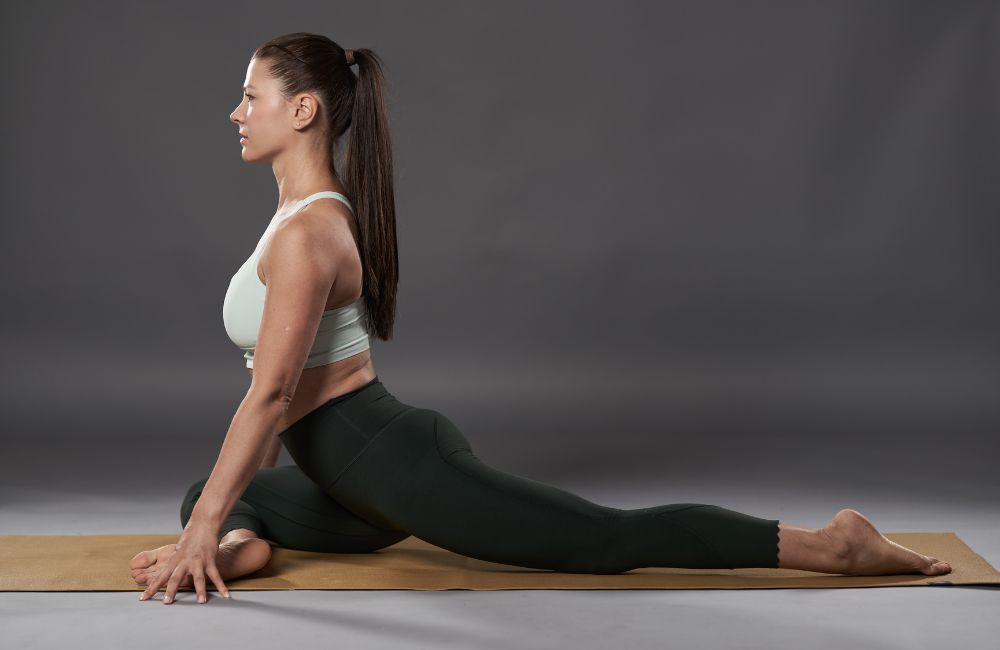
The pigeon pose is another classic yoga exercise. This move can be tough for beginners, so be sure to go slow if you feel a lot of tightness during this pose.
How to Perform
- Start in a double kneeling position.
- Next, use your hands to bring your right leg forward, placing your right ankle in front of your left knee.
- Slowly, push your right ankle forward as you slide your left knee backward.
- Hold the stretch for 30 seconds and repeat 4 times per side.
- Complete this movement 3 or more times per week.
12. Seated Spinal Twist
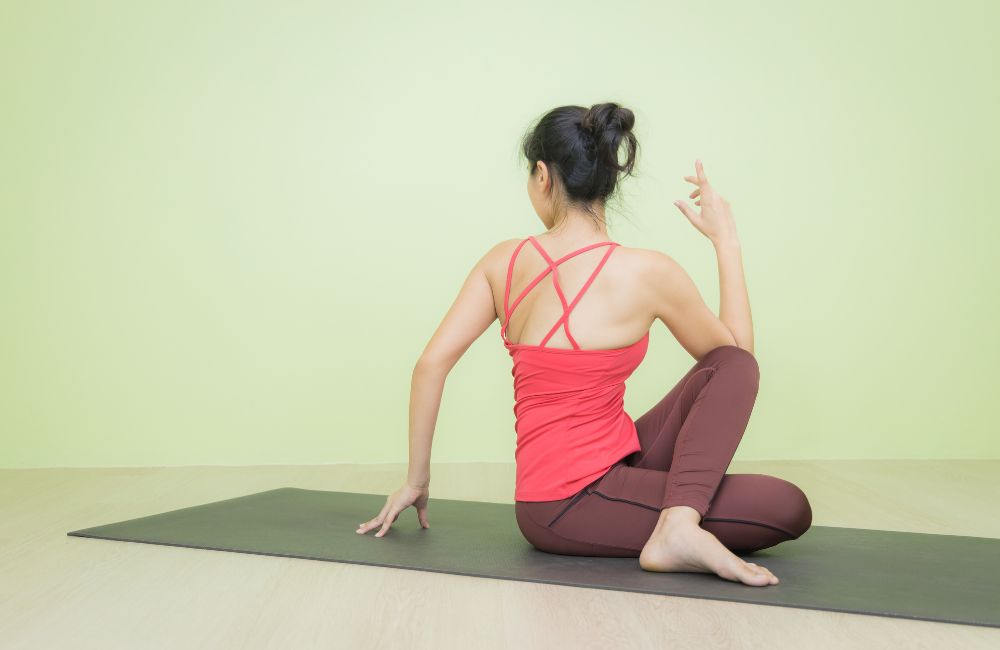
This stretch will often give you a good “pop” in your back. So, if you hear some noise during this movement, don’t be concerned (as long as it doesn’t hurt).
How to Perform
- Start in a seated position.
- Cross your right leg over your left, placing your right foot flat on the ground on the outside of your left thigh.
- Next, twist to your right, placing your left elbow on the outside of your right thigh.
- Place your right hand on the ground behind you, using it and your left elbow to push you further into the stretch.
- Hold for 30 seconds and repeat 4 times on each side.
- Complete this movement 3 or more times per week.
13. Happy Baby Stretch
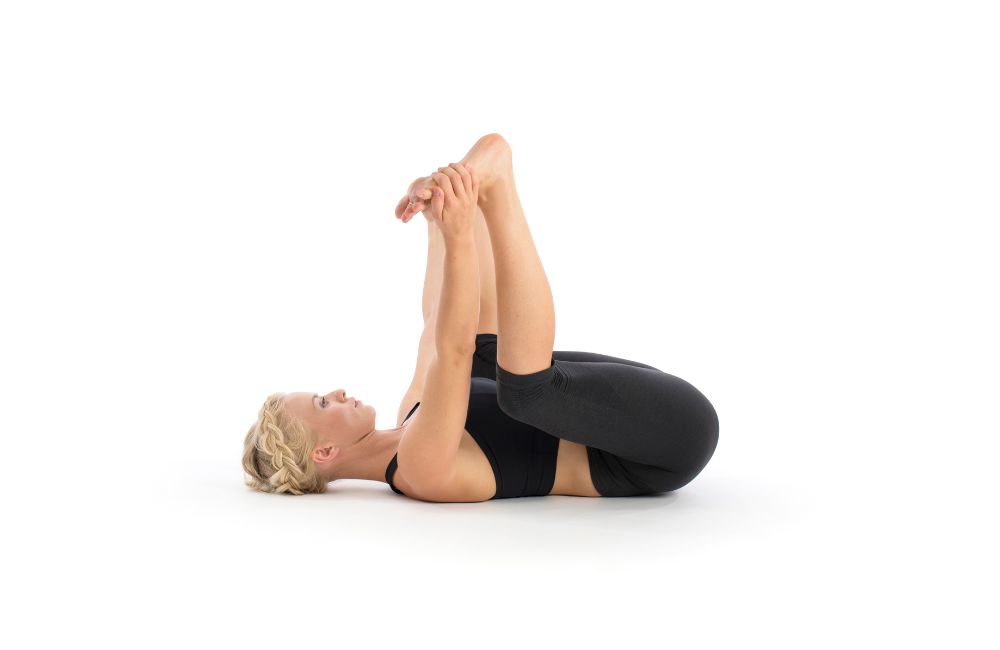
When you see a little baby, you’ll often witness them assuming the happy baby stretch. This move feels great on the spine, no matter your age!
How to Perform
- Lie flat on your back.
- Lift both legs up in the air with your heels facing the ceiling.
- Reach your right hand up and grasp the inside of your right foot, and do the same with your left foot and hand.
- Rock back and forth gently.
- Hold this position for 5 minutes per session.
- Complete this movement 3 or more times per week.
Bow Pose Stretch
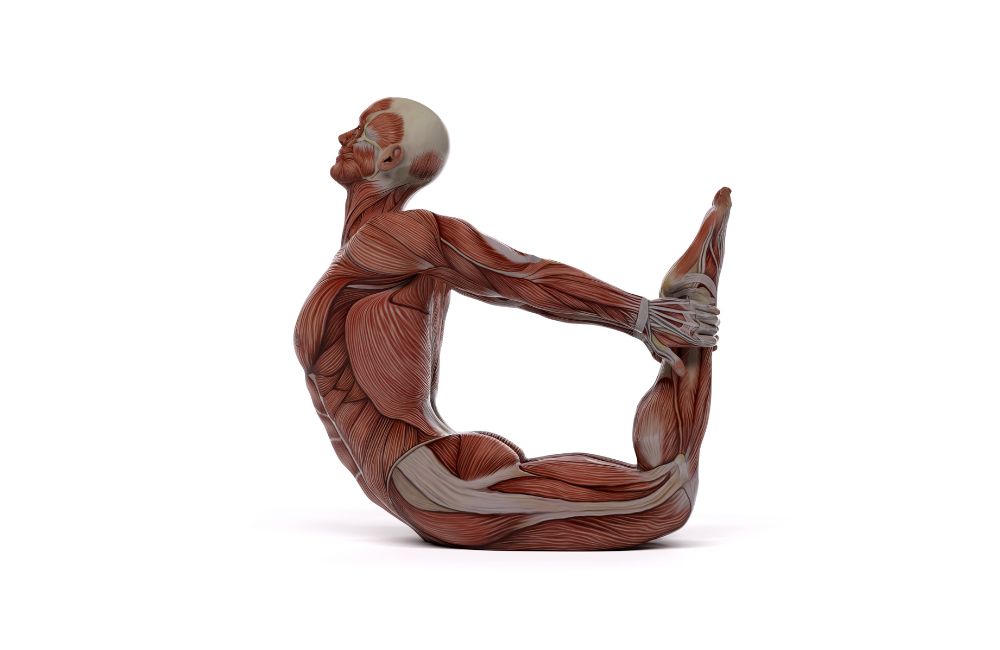
The bow pose is a yoga pose that offers great stretch for your whole body. This floor stretch backbends your body into an archer’s bow, elongating and opening up the hips, shoulders, and upper back.
It’s one stretch that touches almost all body parts and helps improve posture by relieving tightness and stiffness.
This stretch requires flexibility to perform. Consult your physician before starting this routine.
How to Perform:
- Start by lying on your stomach with your feet hip-width apart and hands at your side.
- Squeeze your shoulder blades together and bring your upper body off the floor. Bend your knees and bring your feet towards the glutes, so you can grab your ankles with your hands.
- Once you grab your ankles, lift your thighs off the floor and balance yourself. Relax your back muscles and hold the position for 10-15 seconds.
Conclusion On Stretches for Lower Back Pain
Low back pain is a huge problem for many people. Luckily, with a good stretching and exercise routine, you can bulletproof your back! Try these exercises out today and see what it does for your low back pain!
Works Cited
- Allegri, M., Montella, S., Salici, F., Valente, A., Marchesini, M., Compagnone, C., Baciarello, M., Manferdini, M. E., & Fanelli, G. (2016). Mechanisms of low back pain: a guide for diagnosis and therapy. F1000Research, 5, F1000 Faculty Rev-1530. https://doi.org/10.12688/f1000research.8105.2
- Gordon, R., & Bloxham, S. (2016). A Systematic Review of the Effects of Exercise and Physical Activity on Non-Specific Chronic Low Back Pain. Healthcare (Basel, Switzerland), 4(2), 22. https://doi.org/10.3390/healthcare4020022


